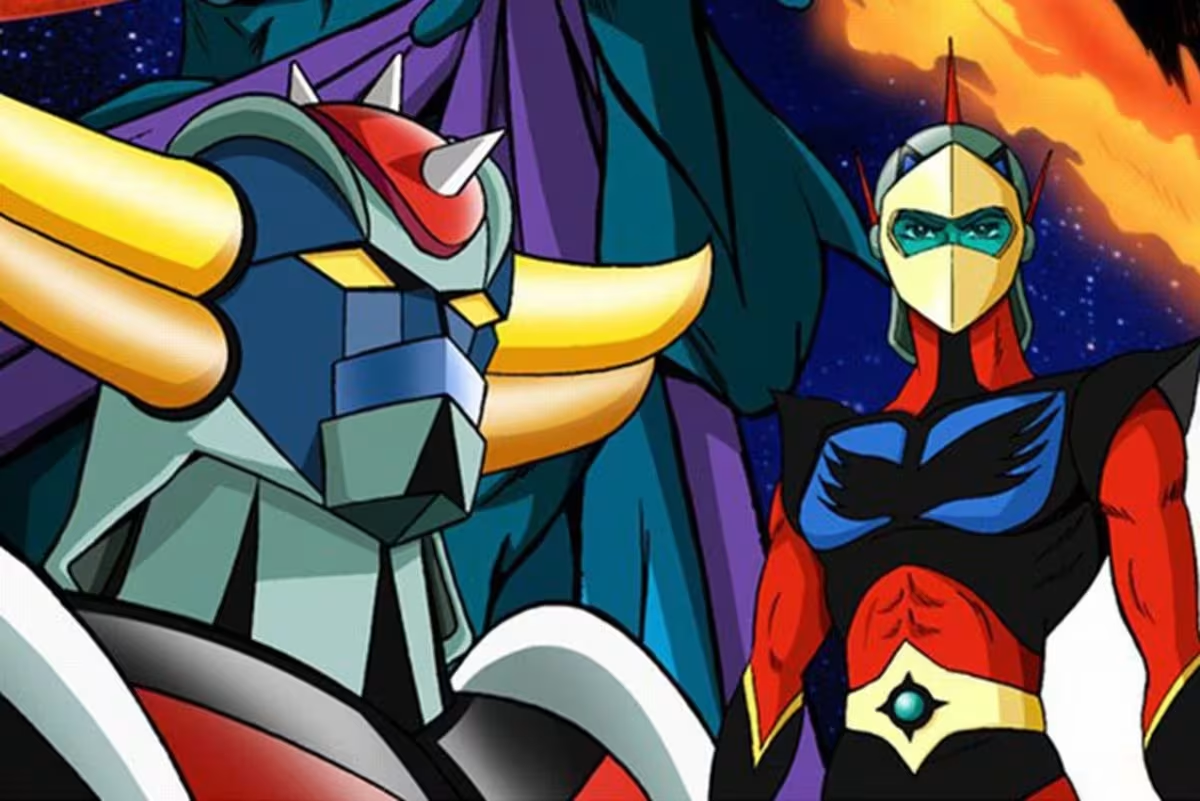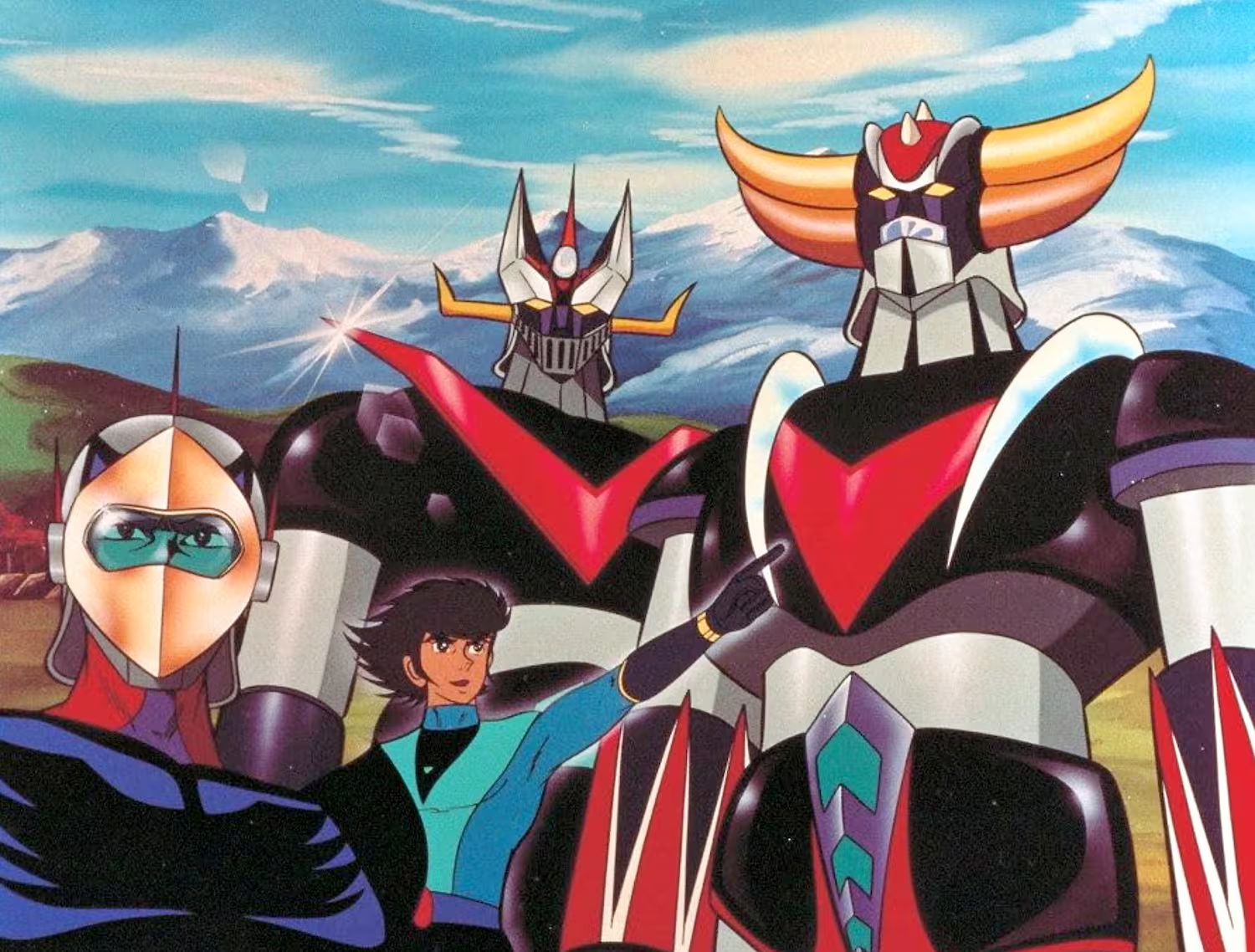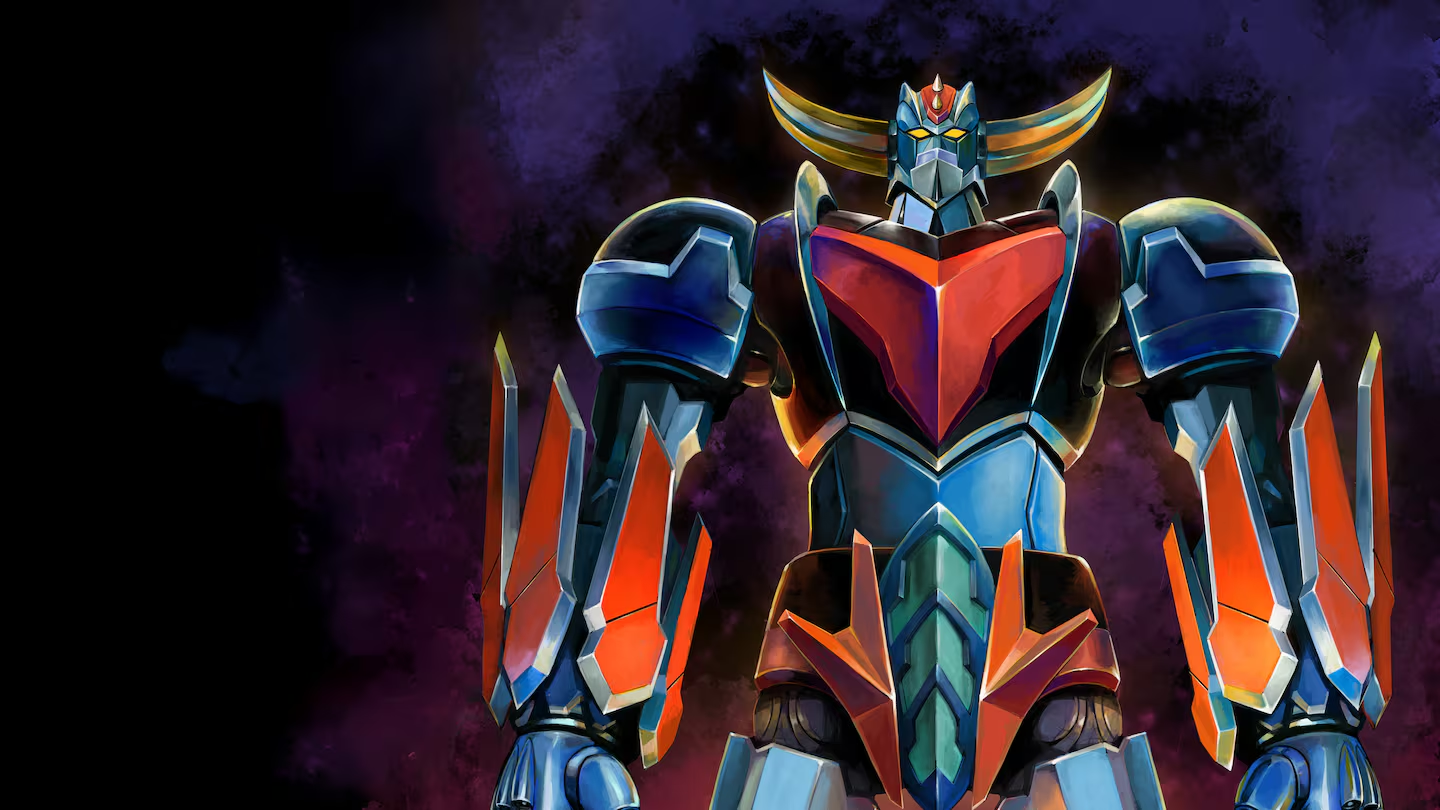Before Neon Genesis Evangelion, Gundam, or Code Geass, there was Goldorak (known as Grendizer in Japan), one of the most influential mecha anime of all time. Created by Go Nagai, this 1975 anime became a massive phenomenon in France and other parts of Europe, shaping the childhoods of an entire generation.
Although Goldorak is part of the larger Mazinger universe, it developed its own unique identity and became one Of The Most Beloved And Iconic Anime Series Of The Late 1970s And Early 1980s. However, behind its success, there are many fascinating anecdotes—one of the most famous being how Goldorak became a European sensation almost by accident.

A Surprising Success: How Goldorak Conquered France By Mistake
In Japan, Goldorak was a moderately successful anime, enjoying a solid fanbase but never reaching the same legendary status as Mazinger Z or Great Mazinger. However, in France, Goldorak became an absolute cultural phenomenon—and it all started with an unexpected turn of events.
In the late 1970s, the French television network Antenne 2 was looking for animated shows to air on their new children’s program, Récré A2. Their goal was to introduce fresh and exciting content to young audiences, but at the time, anime was still unknown in France.
During an acquisition deal with a Japanese distributor, French TV executives bought a package Of Animated Shows, not paying much attention to each individual title. Among the many programs they purchased, one stood out: UFO Robot Grendizer, renamed Goldorak for the French market.
What happened next was completely unexpected.

The Goldorak Boom: A Cultural Revolution
When Goldorak first aired in July 1978, it took France by storm. Children were mesmerized by the story of Prince Actarus (Duke Fleed in the original), the pilot of a powerful alien robot, fighting against the evil forces of Vega to protect Earth.
The combination of epic space battles, intense drama, and larger-than-life mecha action was unlike anything French audiences had ever seen before. The reaction was instant and overwhelming:
- Millions Of Viewers Tuned In Every Week to watch new episodes.
- Merchandising Exploded, with Goldorak toys, comics, and posters flying off store shelves.
- The show became a cultural phenomenon, sparking debates among parents, educators, and even politicians.
For many French fans, Goldorak wasn’t just another cartoon—it was their first exposure to Japanese animation, paving the way for later anime such as Dragon Ball Z, Saint Seiya, and Naruto.

Controversy And Criticism: The “Anti-Goldorak” Movement
With Goldorak’s sudden rise in popularity, not everyone was pleased. Many French Intellectuals, Journalists, And Educators began criticizing The Show, calling it too violent and too different from traditional European animation.
A moral panic emerged, with some claiming that Japanese Cartoons Were A Danger To Children. Newspapers published articles warning about Goldorak’s “negative influence,” and some TV networks debated whether they should stop airing anime altogether.
This was one of the first major controversies about anime in Europe, but despite the criticism, the fans remained loyal. Instead of disappearing, Goldorak only grew more popular.

Goldorak’s Lasting Legacy
Decades later, Goldorak still holds a special place in the hearts of fans. While it may not be as famous globally as Gundam or Evangelion, its impact on French And European Pop Culture is undeniable.
- It was the first anime to achieve mainstream success in France, making way for future anime imports.
- The French Dub of Goldorak became so legendary that it is still remembered today.
- Even modern creators, such as Guillaume Dorison, have written new Goldorak stories to celebrate the franchise.
In many ways, Goldorak was the “accidental ambassador” of anime in Europe. Without it, the anime boom of the 1980s and 1990s might never have happened.

GOLDORAK – The Legendary Story of a Pioneer in Mecha Anime
Table of Contents
Before Neon Genesis Evangelion, Gundam, or Code Geass, there was Goldorak (known as Grendizer in Japan), one of the most influential mecha anime of all time. Created by Go Nagai, this 1975 anime became a massive phenomenon in France and other parts of Europe, shaping the childhoods of an entire generation.
Although Goldorak is part of the larger Mazinger universe, it developed its own unique identity and became one Of The Most Beloved And Iconic Anime Series Of The Late 1970s And Early 1980s. However, behind its success, there are many fascinating anecdotes—one of the most famous being how Goldorak became a European sensation almost by accident.
A Surprising Success: How Goldorak Conquered France By Mistake
In Japan, Goldorak was a moderately successful anime, enjoying a solid fanbase but never reaching the same legendary status as Mazinger Z or Great Mazinger. However, in France, Goldorak became an absolute cultural phenomenon—and it all started with an unexpected turn of events.
In the late 1970s, the French television network Antenne 2 was looking for animated shows to air on their new children’s program, Récré A2. Their goal was to introduce fresh and exciting content to young audiences, but at the time, anime was still unknown in France.
During an acquisition deal with a Japanese distributor, French TV executives bought a package Of Animated Shows, not paying much attention to each individual title. Among the many programs they purchased, one stood out: UFO Robot Grendizer, renamed Goldorak for the French market.
What happened next was completely unexpected.
The Goldorak Boom: A Cultural Revolution
When Goldorak first aired in July 1978, it took France by storm. Children were mesmerized by the story of Prince Actarus (Duke Fleed in the original), the pilot of a powerful alien robot, fighting against the evil forces of Vega to protect Earth.
The combination of epic space battles, intense drama, and larger-than-life mecha action was unlike anything French audiences had ever seen before. The reaction was instant and overwhelming:
For many French fans, Goldorak wasn’t just another cartoon—it was their first exposure to Japanese animation, paving the way for later anime such as Dragon Ball Z, Saint Seiya, and Naruto.
Controversy And Criticism: The “Anti-Goldorak” Movement
With Goldorak’s sudden rise in popularity, not everyone was pleased. Many French Intellectuals, Journalists, And Educators began criticizing The Show, calling it too violent and too different from traditional European animation.
A moral panic emerged, with some claiming that Japanese Cartoons Were A Danger To Children. Newspapers published articles warning about Goldorak’s “negative influence,” and some TV networks debated whether they should stop airing anime altogether.
This was one of the first major controversies about anime in Europe, but despite the criticism, the fans remained loyal. Instead of disappearing, Goldorak only grew more popular.
Goldorak’s Lasting Legacy
Decades later, Goldorak still holds a special place in the hearts of fans. While it may not be as famous globally as Gundam or Evangelion, its impact on French And European Pop Culture is undeniable.
In many ways, Goldorak was the “accidental ambassador” of anime in Europe. Without it, the anime boom of the 1980s and 1990s might never have happened.